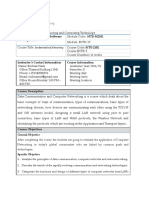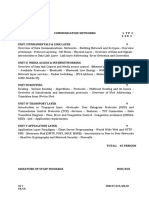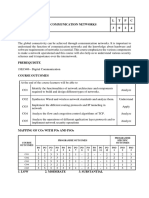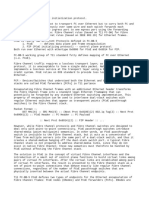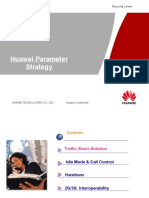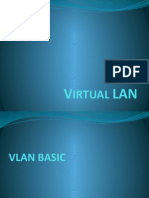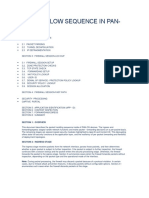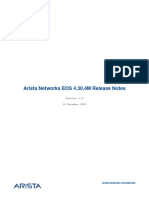0% found this document useful (0 votes)
32 views2 pages01 Aaa Syllabus
The document provides a detailed description of the undergraduate course ECF441: Data Communication and Networks offered by the EECE department, focusing on the fundamentals of data communication networks and their design issues. It outlines course objectives, outcomes, and curriculum content across five units covering various layers of networking, protocols, and security. Additionally, it lists required textbooks and a teaching strategy involving online resources.
Uploaded by
rakshitsahni04Copyright
© © All Rights Reserved
We take content rights seriously. If you suspect this is your content, claim it here.
Available Formats
Download as DOCX, PDF, TXT or read online on Scribd
0% found this document useful (0 votes)
32 views2 pages01 Aaa Syllabus
The document provides a detailed description of the undergraduate course ECF441: Data Communication and Networks offered by the EECE department, focusing on the fundamentals of data communication networks and their design issues. It outlines course objectives, outcomes, and curriculum content across five units covering various layers of networking, protocols, and security. Additionally, it lists required textbooks and a teaching strategy involving online resources.
Uploaded by
rakshitsahni04Copyright
© © All Rights Reserved
We take content rights seriously. If you suspect this is your content, claim it here.
Available Formats
Download as DOCX, PDF, TXT or read online on Scribd
/ 2














